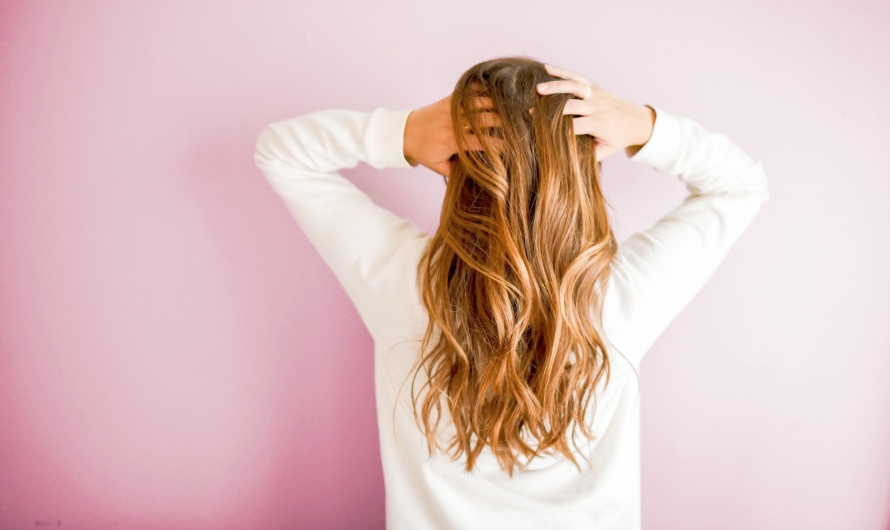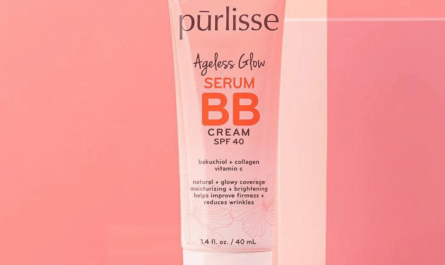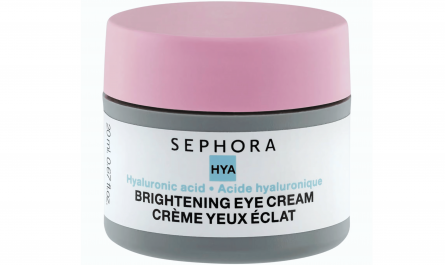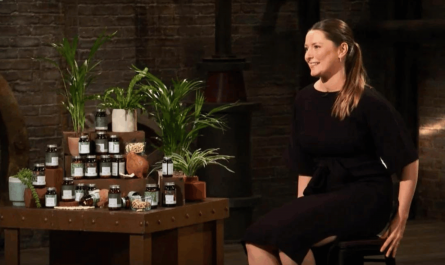Your hair is one of your most prominent features that can enhance or diminish your appearance. It can also reflect your personality, mood, and style. However, not all hair is created equal. Different people have different hair types and textures that require different care and products. Knowing your hair type and texture can help you understand your hair better and choose the best products for it.
In this article, we will show you how to determine your hair type and texture and how to choose the best products for it. We will explain the different hair types based on shape, thickness, and porosity; the different hair textures based on smoothness, frizziness, dryness, oiliness, and damage; and the best products based on ingredients, functions, and usage.
What are the Different Hair Types?
Your hair type is determined by three factors: the shape of your hair follicles, the thickness of your individual hair strands, and the porosity of your hair cuticles. These factors affect how your hair looks, feels, behaves, and responds to products.
The Shape of Your Hair Follicles
The shape of your hair follicles determines whether your hair is straight, wavy, curly, or coily. The more oval or flat your follicles are, the more curly or coily your hair is. The more round or circular your follicles are, the more straight or wavy your hair is.
You can identify your hair shape by looking at its natural pattern when it is dry without any styling products or tools. You can also use a curl chart that divides hair shapes into four categories:
- Straight: This is when your hair has no visible bends or curls. It is usually smooth, shiny, and sleek but can also be limp or flat.
- Wavy: This is when your hair has slight bends or waves that form an S shape. It is usually soft, bouncy, and voluminous but can also be frizzy or undefined.
- Curly: This is when your hair has tight curls that form a spiral shape. It is usually springy, textured, and resilient but can also be dry or tangled.
- Coily: This is when your hair has very tight curls or coils that form a zigzag shape. It is usually dense, fluffy, and versatile but can also be brittle or shrinkable.
Each category can also have subcategories based on the size and shape of the curls or waves such as 1A (straight), 2A (wavy), 3A (curly), or 4A (coily).
The Thickness of Your Individual Hair Strands
The thickness of your individual hair strands determines whether your hair is fine, medium, or thick. The thicker your strands are, the more volume and weight your hair has. The thinner your strands are, the more limp and light your hair is.
You can measure your hair thickness by comparing it to a piece of thread. You can also use a strand test that divides hair thickness into three categories:
- Fine: This is when your hair is thinner than a piece of thread. It is usually soft, silky, and shiny but can also be weak or oily.
- Medium: This is when your hair is similar to a piece of thread. It is usually strong, manageable, and balanced but can also be dull or frizzy.
- Thick: This is when your hair is thicker than a piece of thread. It is usually coarse, full, and resilient but can also be heavy or dry.
The Porosity of Your Hair Cuticles
The porosity of your hair cuticles determines how well your hair absorbs and retains moisture and products. The more porous your hair is, the more easily it absorbs and loses moisture and products. The less porous your hair is, the more difficult it absorbs and retains moisture and products.
You can test your hair porosity by using a water test that divides hair porosity into three categories:
- Low: This is when your hair floats on top of a glass of water for several minutes. It means that your cuticles are tightly closed and resist moisture and products. Your hair is usually healthy, shiny, and smooth but can also be stiff or greasy.
- Medium: This is when your hair sinks slowly to the middle of a glass of water. It means that your cuticles are slightly open and allow moisture and products to enter and exit. Your hair is usually normal, elastic, and easy to style but can also be prone to damage or buildup.
- High: This is when your hair sinks quickly to the bottom of a glass of water. It means that your cuticles are widely open and lose moisture and products rapidly. Your hair is usually dry, dull, and frizzy but can also be porous or brittle.
What are the Different Hair Textures?
Your hair texture is determined by how smooth, frizzy, dry, oily, or damaged your hair is. It affects how your hair looks, feels, behaves, and responds to products.
The Smoothness of Your Hair
The smoothness of your hair refers to how sleek, glossy, or flat your hair is. It depends on how well your cuticles lie flat and reflect light. The smoother your hair is, the more shiny and sleek it looks. The less smooth your hair is, the more dull and rough it looks.
You can improve your hair smoothness by using products that contain silicones, oils, or keratin that coat and seal your cuticles. You can also use tools such as brushes, combs, or flat irons that smooth out your cuticles.
The Frizziness of Your Hair
The frizziness of your hair refers to how much your hair stands out or curls up from its natural shape. It depends on how much moisture your hair absorbs from the air or loses from its core. The more frizzy your hair is, the more puffy and unruly it looks. The less frizzy your hair is, the more defined and manageable it looks.
You can reduce your hair frizziness by using products that contain humectants, moisturizers, or anti-frizz agents that hydrate and smooth your hair. You can also use tools such as diffusers, curlers, or rollers that shape and control your hair.
The Dryness of Your Hair
The dryness of your hair refers to how much moisture your hair lacks or needs. It depends on how well your hair retains water and oil in its core and cuticles. The more dry your hair is, the more brittle and dull it looks. The less dry your hair is, the more soft and shiny it looks.
You can increase your hair moisture by using products that contain hydrating, nourishing, or repairing ingredients such as aloe vera, honey, coconut oil, shea butter, etc. You can also use treatments such as masks, deep conditioners, or hot oil treatments that replenish and restore your hair.
The Oiliness of Your Hair
The oiliness of your hair refers to how much oil your hair produces or accumulates. It depends on how active your sebaceous glands are and how often you wash your hair. The more oily your hair is, the more greasy and limp it looks. The less oily your hair is, the more clean and voluminous it looks.
You can balance your hair oil by using products that contain clarifying, cleansing, or volumizing ingredients such as tea tree oil, lemon juice, baking soda, etc. You can also use techniques such as dry shampooing, blotting, or massaging that remove excess oil from your hair.
The Damage of Your Hair
The damage of your hair refers to how much your hair is broken or split due to physical or chemical stress. It depends on how often you expose your hair to heat, color, bleach, or styling products. The more damaged your hair is, the more split ends and breakage it has. The less damaged your hair is, the more healthy and strong it is.
You can prevent or repair your hair damage by using products that contain protective, strengthening, or healing ingredients such as sunscreen, protein, biotin, etc. You can also use methods such as trimming, detangling, or braiding that prevent further damage to your hair.
How to Choose the Best Products for Your Hair Type and Texture?
After determining your hair type and texture, you can choose the best products for your hair based on their ingredients, functions, and usage. Here are some guidelines on how to choose the best products for your hair type and texture:
Read the Labels and Ingredients of Hair Products
One of the most important steps in choosing the best products for your hair is to read the labels and ingredients of the products carefully. You should look for products that are suitable for your hair type and texture and avoid products that contain harmful chemicals or allergens that can damage or irritate your hair.
Some of the ingredients that you should look for in hair products are:
- Natural or organic ingredients: These are ingredients that are derived from plants, animals, minerals, or other natural sources. They are usually gentle, safe, and beneficial for your hair. Some examples are aloe vera, honey, coconut oil, shea butter, etc.
- Moisturizing or hydrating ingredients: These are ingredients that add or retain moisture in your hair. They are especially good for dry or frizzy hair. Some examples are glycerin, panthenol, hyaluronic acid, etc.
- Protein or strengthening ingredients: These are ingredients that rebuild or reinforce the structure of your hair. They are especially good for damaged or weak hair. Some examples are keratin, collagen, silk amino acids, etc.
- Antioxidant or anti-inflammatory ingredients: These are ingredients that protect or soothe your hair from free radicals or irritation. They are especially good for colored or sensitive hair. Some examples are vitamin C,vitamin E, green tea, chamomile, etc.
Some of the ingredients that you should avoid in hair products are:
- Sulfates: These are detergents that remove dirt and oil from your hair. However, they can also strip away the natural moisture and oils from your hair and scalp, making them dry, frizzy, or irritated. Some examples are sodium lauryl sulfate, sodium laureth sulfate, ammonium lauryl sulfate, etc.
- Parabens: These are preservatives that prevent the growth of bacteria and fungi in hair products. However, they can also disrupt the hormonal balance in your body and cause allergic reactions or health problems. Some examples are methylparaben, propylparaben, butylparaben, etc.
- Silicones: These are polymers that coat and smooth your hair cuticles. However, they can also weigh down your hair, prevent moisture and nutrients from penetrating your hair, and cause buildup or residue. Some examples are dimethicone, cyclomethicone, amodimethicone, etc.
- Alcohol: This is a solvent that dissolves or evaporates other ingredients in hair products. However, it can also dry out your hair and scalp, make them brittle or flaky, and cause frizz or breakage. Some examples are ethanol, isopropyl alcohol, denatured alcohol, etc.
Select the Right Shampoo, Conditioner, Mask, Serum, Oil, Gel, Spray, or Cream for Your Hair Type and Texture
Another step in choosing the best products for your hair is to select the right type of product for your hair type and texture. Different types of products have different functions and effects on your hair. You should choose the products that match your hair needs and goals.
Some of the types of products that you can choose from are:
- Shampoo: This is a product that cleanses your hair and scalp from dirt, oil, and product buildup. You should choose a shampoo that is gentle and moisturizing for dry or frizzy hair; clarifying and volumizing for oily or limp hair; color-safe and nourishing for colored or damaged hair; or curl-enhancing and defining for curly or coily hair.
- Conditioner: This is a product that conditions your hair and scalp after shampooing. It adds moisture, softness, shine, and manageability to your hair. You should choose a conditioner that is hydrating and detangling for dry or frizzy hair; lightweight and balancing for oily or limp hair; repairing and strengthening for damaged or weak hair; or curl-boosting and smoothing for curly or coily hair.
- Mask: This is a product that treats your hair and scalp with intensive care. It provides deep hydration, nourishment, repair, or protection to your hair. You should use a mask once or twice a week depending on your hair condition. You should choose a mask that is moisturizing and soothing for dry or frizzy hair; purifying and refreshing for oily or limp hair; restoring and fortifying for damaged or weak hair; or curl-reviving and enhancing for curly or coily hair.
- Serum: This is a product that coats your hair with a thin layer of liquid. It adds shine, smoothness, frizz-control, or heat-protection to your hair. You should apply a serum on damp or dry hair before styling or as a finishing touch. You should choose a serum that is smoothing and glossing for dry or frizzy hair; volumizing and lifting for oily or limp hair; repairing and sealing for damaged or split ends; or curl-defining and taming for curly or coily hair.
- Oil: This is a product that penetrates your hair with natural oils. It adds moisture,nourishment, shine, or scalp-health to your hair. You should apply an oil on damp or dry hair before or after styling or as a treatment. You should choose an oil that is hydrating and softening for dry or frizzy hair; clarifying and regulating for oily or limp hair; repairing and strengthening for damaged or weak hair; or curl-enhancing and moisturizing for curly or coily hair.
- Gel: This is a product that shapes your hair with a thick gel. It adds hold, definition, or texture to your hair. You should apply a gel on damp or dry hair before or after styling. You should choose a gel that is strong and sculpting for straight or wavy hair; medium and flexible for curly or coily hair; or light and natural for fine or thin hair.
- Spray: This is a product that sprays your hair with a fine mist. It adds volume, shine, hold, or protection to your hair. You should apply a spray on damp or dry hair before, during, or after styling. You should choose a spray that is volumizing and lifting for fine or thin hair; shining and smoothing for dry or frizzy hair; holding and setting for straight or wavy hair; or protecting and refreshing for colored or damaged hair.
- Cream: This is a product that moisturizes your hair with a creamy lotion. It adds softness, smoothness, curl-control, or heat-protection to your hair. You should apply a cream on damp or dry hair before or after styling. You should choose a cream that is moisturizing and smoothing for dry or frizzy hair; curl-controlling and defining for curly or coily hair; heat-protecting and styling for straight or wavy hair; or repairing and nourishing for damaged or weak hair.
Use the Products Correctly and Adjust the Frequency and Amount According to Your Hair Needs
The final step in choosing the best products for your hair is to use the products correctly and adjust the frequency and amount according to your hair needs. Different products have different directions and recommendations on how to use them. You should follow the instructions on the labels of the products and consult with your hairstylist if you have any questions.
Some of the general tips on how to use the products correctly and adjust the frequency and amount are:
- Shampoo: You should shampoo your hair every two to three days depending on your hair type and texture. You should use a small amount of shampoo (about a quarter-sized) and massage it gently into your scalp and roots. You should rinse it thoroughly with lukewarm water.
- Conditioner: You should condition your hair every time you shampoo it. You should use a moderate amount of conditioner (about a palm-sized) and apply it evenly from the mid-lengths to the ends of your hair. You should leave it on for about three to five minutes and rinse it well with cold water.
- Mask: You should use a mask once or twice a week depending on your hair condition. You should use a generous amount of mask (about two palm-sized) and apply it thoroughly from the roots to the ends of your hair. You should cover your hair with a shower cap or a towel and leave it on for about 15 to 30 minutes. You should rinse it off with warm water.
- Serum: You should use a serum sparingly depending on your hair length and thickness. You should use a few drops of serum (about a pea-sized) and rub it between your palms. You should apply it lightly from the mid-lengths to the ends of your hair. You should avoid applying it on your scalp or roots.
- Oil: You should use an oil moderately depending on your hair type and texture. You should use a few drops of oil (about a dime-sized) and rub it between your palms. You should apply it gently from the mid-lengths to the ends of your hair. You can also massage it into your scalp if you have dry or flaky scalp.
- Gel: You should use a gel moderately depending on your hair style and hold. You should use a small amount of gel (about a nickel-sized) and rub it between your palms. You should apply it evenly from the roots to the ends of your hair. You can also scrunch, twist, or shape your hair with your fingers or a comb.
- Spray: You should use a spray lightly depending on your hair effect and finish. You should hold the spray bottle about six inches away from your hair and spray it evenly all over your hair. You can also spray it on specific areas or sections of your hair for more targeted results.
- Cream: You should use a cream moderately depending on your hair type and texture. You should use a small amount of cream (about a quarter-sized) and rub it between your palms. You should apply it smoothly from the mid-lengths to the ends of your hair. You can also apply it on damp or dry hair before or after styling.
Conclusion
Choosing the best products for your hair can be easy and fun if you know your hair type and texture and how to select the right products for them. By reading the labels and ingredients of the products, selecting the right type of product for your hair type and texture, and using the products correctly and adjusting the frequency and amount according to your hair needs, you can achieve healthy, beautiful, and manageable hair.
FAQs
Here are some frequently asked questions and their answers related to the topic of this article:
- Q: How often should I change my hair products?
- A: There is no definitive answer to how often you should change your hair products. It depends on your hair condition, goals, and preferences. However, some general reasons why you may want to change your hair products are:
- Your hair has changed due to factors such as age, hormones, diet, stress, etc.
- Your hair has become used to or immune to the products that you are using.
- Your hair has developed problems or issues such as buildup, irritation, or damage due to the products that you are using.
- Your hair needs or goals have changed due to factors such as season, occasion, style, etc.
- You want to try new or different products that may suit your hair better or give you better results.
- Q: How can I find out what ingredients are good or bad for my hair?
- A: One of the best ways to find out what ingredients are good or bad for your hair is to do some research online or offline. You can read articles, blogs, reviews, books, magazines, etc. that provide information and advice on different ingredients and their effects on different hair types and textures. You can also consult with your hairstylist, dermatologist, or other experts who can give you professional recommendations based on your hair condition and needs.
- Q: How can I test if a product is suitable for my hair before buying it?
- A: One of the best ways to test if a product is suitable for your hair before buying it is to get a sample of it. You can ask for a sample of the product from the store, online retailer, or brand that sells it. You can also buy a travel-sized or mini version of the product that costs less than the full-sized one. You can then try the product on your hair and see how it works for you. You can also do a patch test on your skin or scalp to see if you have any allergic reactions or irritations to the product.
- Q: How can I store my hair products properly and safely?
- A: One of the best ways to store your hair products properly and safely is to follow the instructions and precautions on the labels of the products. You should keep your hair products in a cool and dry place away from direct sunlight, heat, or moisture. You should also keep your hair products in their original containers or bottles and close them tightly after each use. You should also avoid sharing your hair products with others or using expired or contaminated products.
- Q: How can I make my own hair products at home using natural ingredients?
- A: One of the best ways to make your own hair products at home using natural ingredients is to use simple and easy recipes that you can find online or offline. You can use ingredients that are readily available in your kitchen, garden, or local market such as fruits, vegetables, herbs, spices, oils, etc. You can also use tools and equipment that are common in your household such as blenders, mixers, bowls, spoons, etc. You can then follow the instructions and measurements of the recipes and apply the products on your hair as you would use regular products. However, you should be careful and cautious when making and using homemade products as they may not be as effective, safe, or stable as commercial products. You should also do a patch test on your skin or scalp before using them and store them properly and safely.




